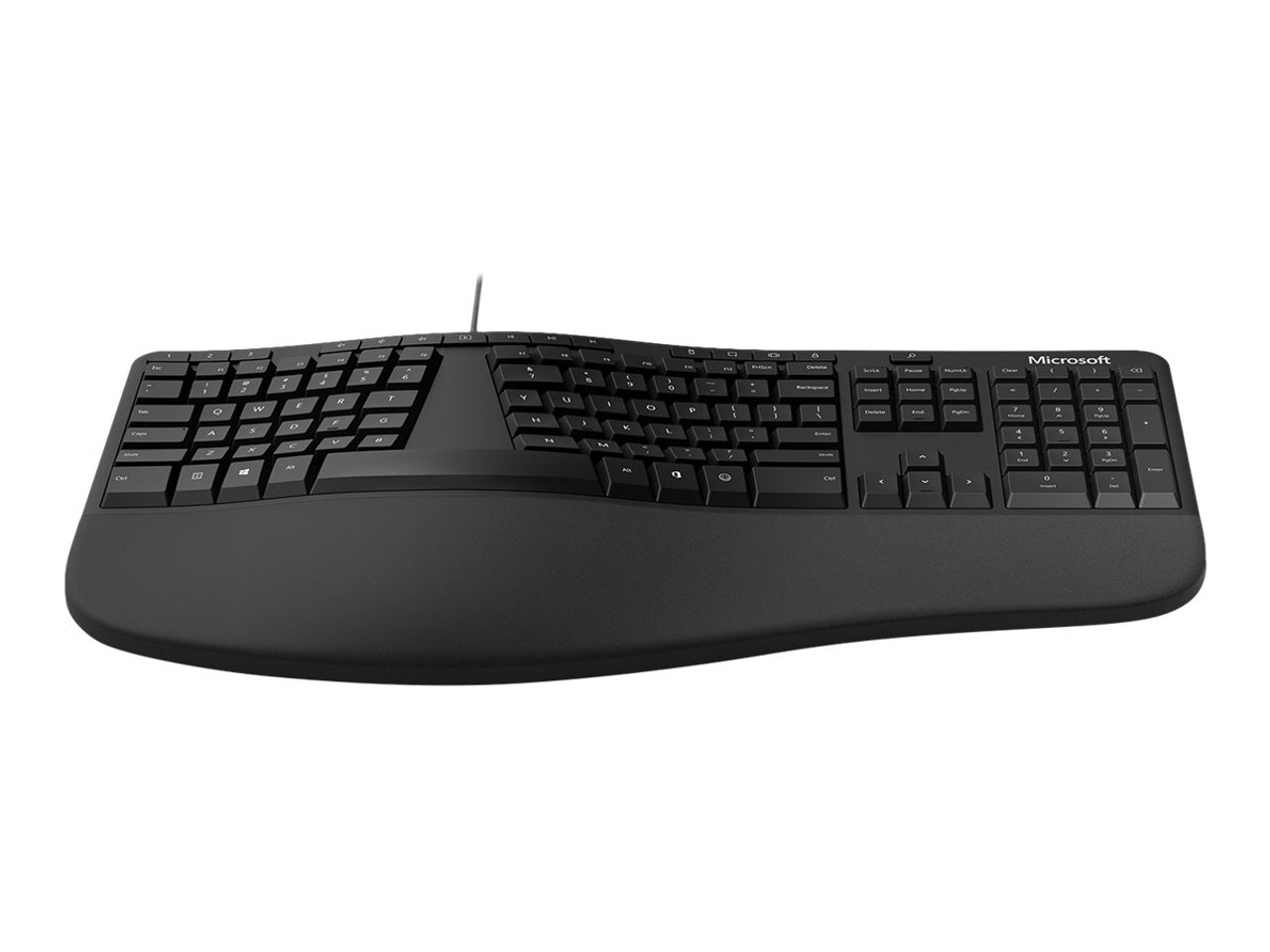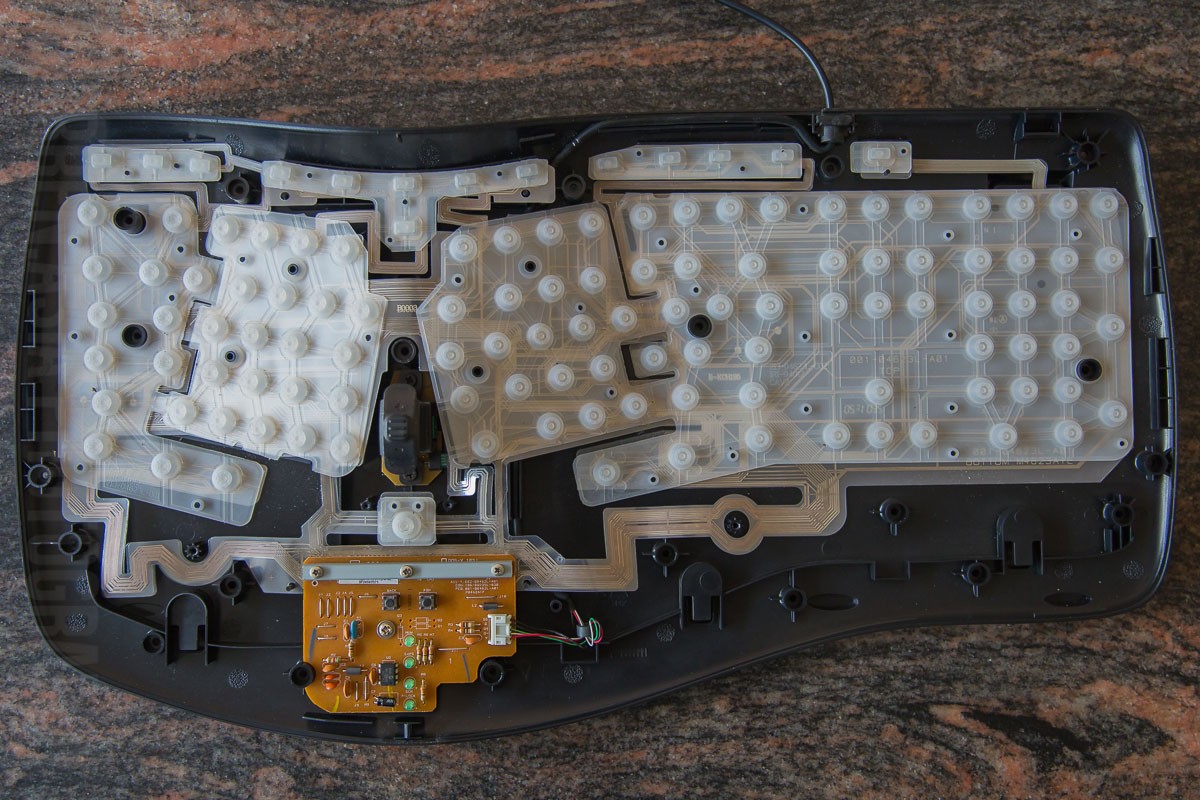

I anticipate this experience will dissipate over time as I continue to acclimate to the ergonomic layout, but it’s still not an ideal first experience.

I normally touch type without looking at the keys, but I had to steal significant downward glances and resist the urge for my left hand to cross the bulge into the exclusive right-hand zone. On the Ergonomic Keyboard, I managed 53, and that was after several hours' practice. I’m an above-average typist, usually achieving around 60 words per minute. While there is a bit of wobble when you strike the keys off center, I quickly forgot about it during a long day of typing.Īlas, typing on an ergonomic board requires a significant amount of adjustment if you’ve never used one before. The keys depress with a satisfying, muted thud that won’t annoy your co-workers. Comfortable TypingĪlthough the Ergonomic Keyboard’s raison d’etre is making your hands and wrists more comfortable, it also offers excellent typing comfort, among the most satisfying of any non-mechanical keyboard I’ve used. Vacuuming it with a soft brush attachment would likely work just fine. Microsoft offers no cleaning instructions for the Ergonomic Keyboard, so I just brushed it off with my fingers at the end of each workday. Luckily, I found the soft fabric supremely comfortable, if a bit prone to specks of dirt.

It’s integral to the design, and you really wouldn’t be able to type effectively without it. Unlike those of some gaming keyboards, the Microsoft keyboard’s wrist rest cannot be detached. If not, the tilt leg is easily removable-it snaps into and out of place. The tilt leg angles the keys further away from you to ensure a neutral angle in case your chair positions your elbows higher than your wrists. Compare that with a height of just 1.6 inches for the Logitech Ergo K860, another split ergonomic keyboard. With the removable front tilt leg installed, the board stands a commanding 2.39 inches high and has a depth of 10.33 inches. The heft is noticeable as soon as you take the Ergonomic Keyboard out of the box, and dimensions confirm it. The current Ergonomic Keyboard is also much more substantial and solid-feeling than some previous ergonomic offerings from Microsoft, including the Sculpt Ergonomic Keyboard, which is shallower and features a cutout where the keys split instead of a solid plastic bulge. If you’re upgrading from an Ergonomic Keyboard that you’ve had for many years, you’ll appreciate the lack of the late-'90s silver accents that swoop up and down the wrist rests of previous Ergonomic Keyboard designs. The black plastic finish is understated and classy, if not particularly sleek. The Ergonomic Keyboard feels supremely sturdy, unlike the flimsier boards that are often bundled with a new desktop or all-in-one PC. As with most peripherals we review, we’re not evaluating the ergonomic efficacy of this keyboard, but rather the build quality, the features, and the overall comfort it offers. The result is a “neutral wrist posture,” which Microsoft claims has been approved by ergonomists. Meanwhile, your wrists remain on the luxuriously soft, oversized fabric wrist wrest, which also has a bulge in the middle to further enforce hand separation. They’re coerced into taking up positions once taught in middle-school typing classes, with your pointer fingers resting above the F and J keys and all of the other fingers assigned to strike specific keys. The upward bulge means the Ergonomic Keyboard strictly forces your hands apart so they aren’t tempted to roam freely above the keys. There’s a giant gap in the middle that bulges upward (roughly the opposite of the downward waterfalls seen in most depictions of Moses's feat). This board is split in half like a parting Red Sea. Many keyboards offer wrist rests, tilt adjustments, and other accoutrements to improve ergonomics, but few go as far as Microsoft’s Ergonomic Keyboard. It manages to offer a superior typing sensation-almost as good as typing on mechanical key switches-while still maintaining an ergonomically correct position. This keyboard has been around in various iterations for years, and the current version (released in 2019) deserves a close look from productivity hounds. Keyboards with mechanical switches offer superior key stability and a satisfying clicking sensation, while ergonomically designed boards like the Microsoft Ergonomic Keyboard ($59.99) force your arms, wrists, and hands into a position that could help eliminate strain and injury. There are two main types of keyboards you should look for if typing comfort is paramount.


 0 kommentar(er)
0 kommentar(er)
